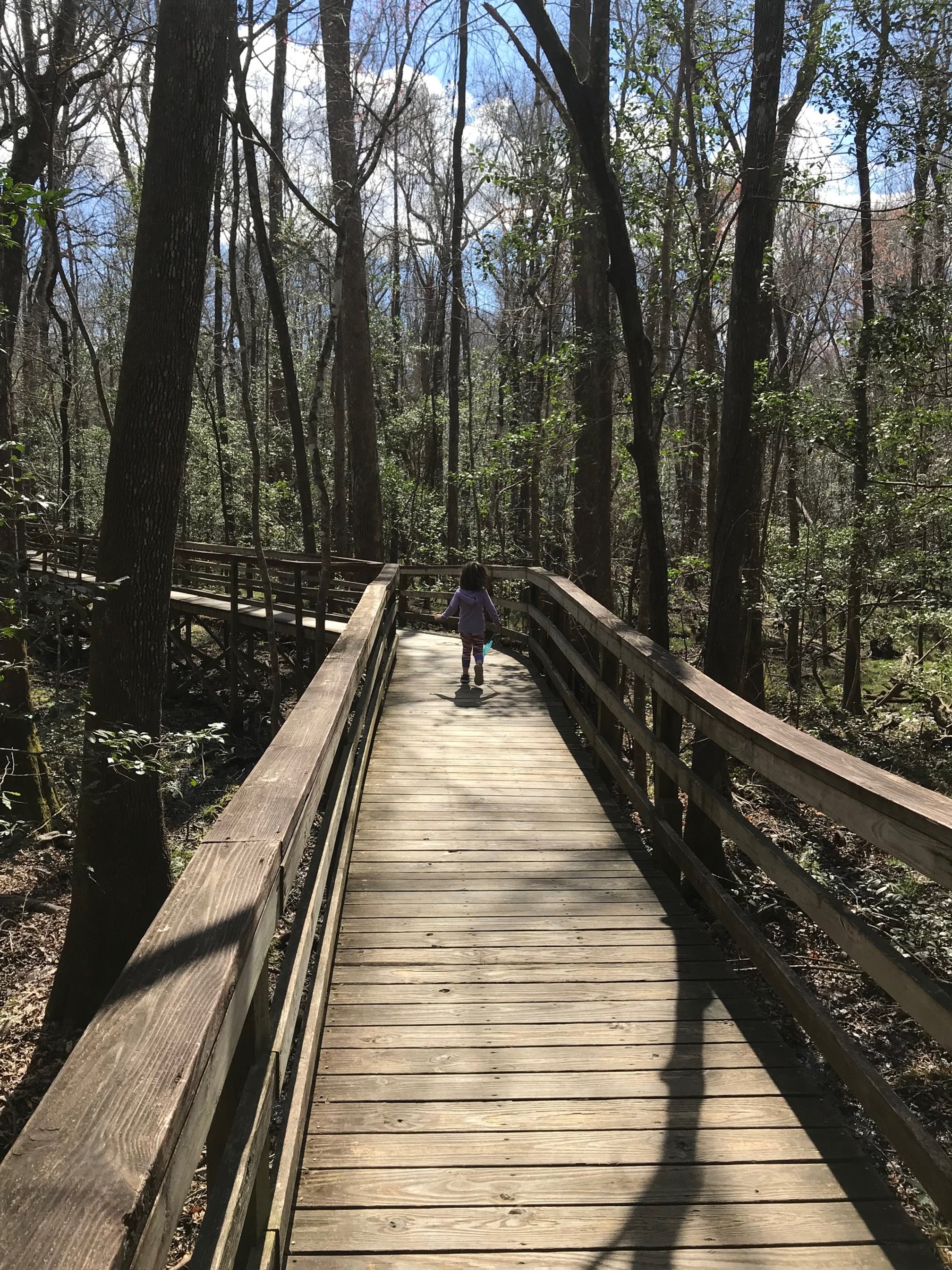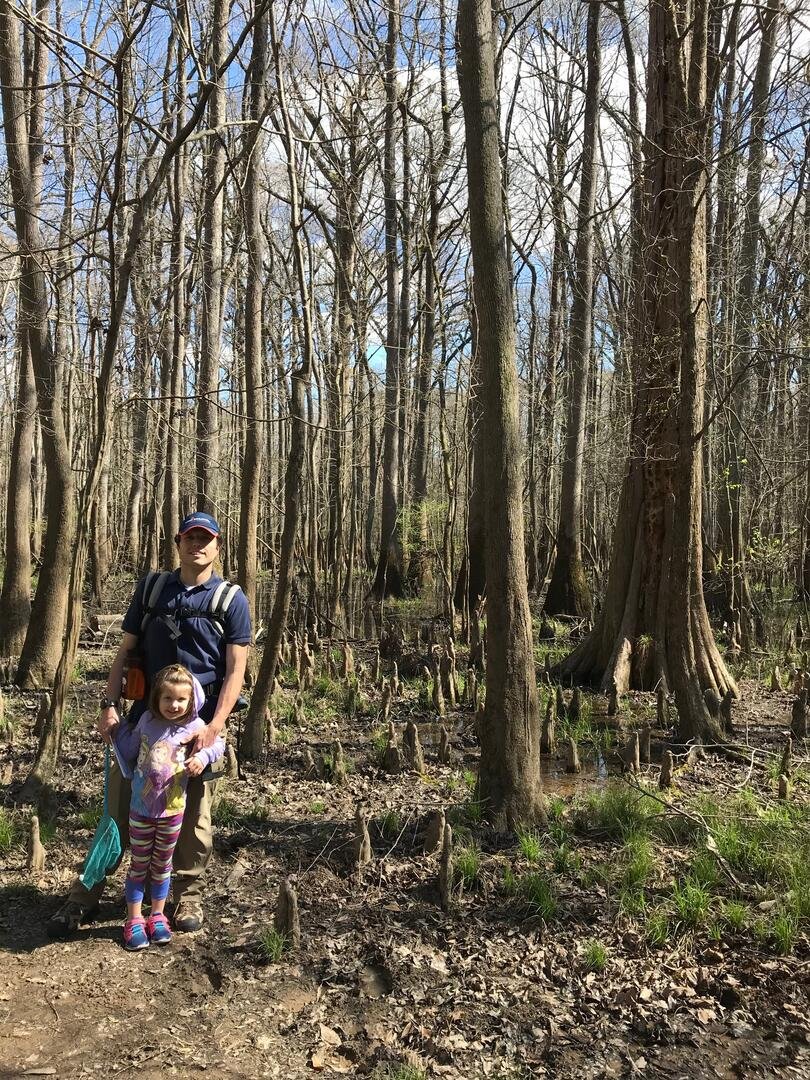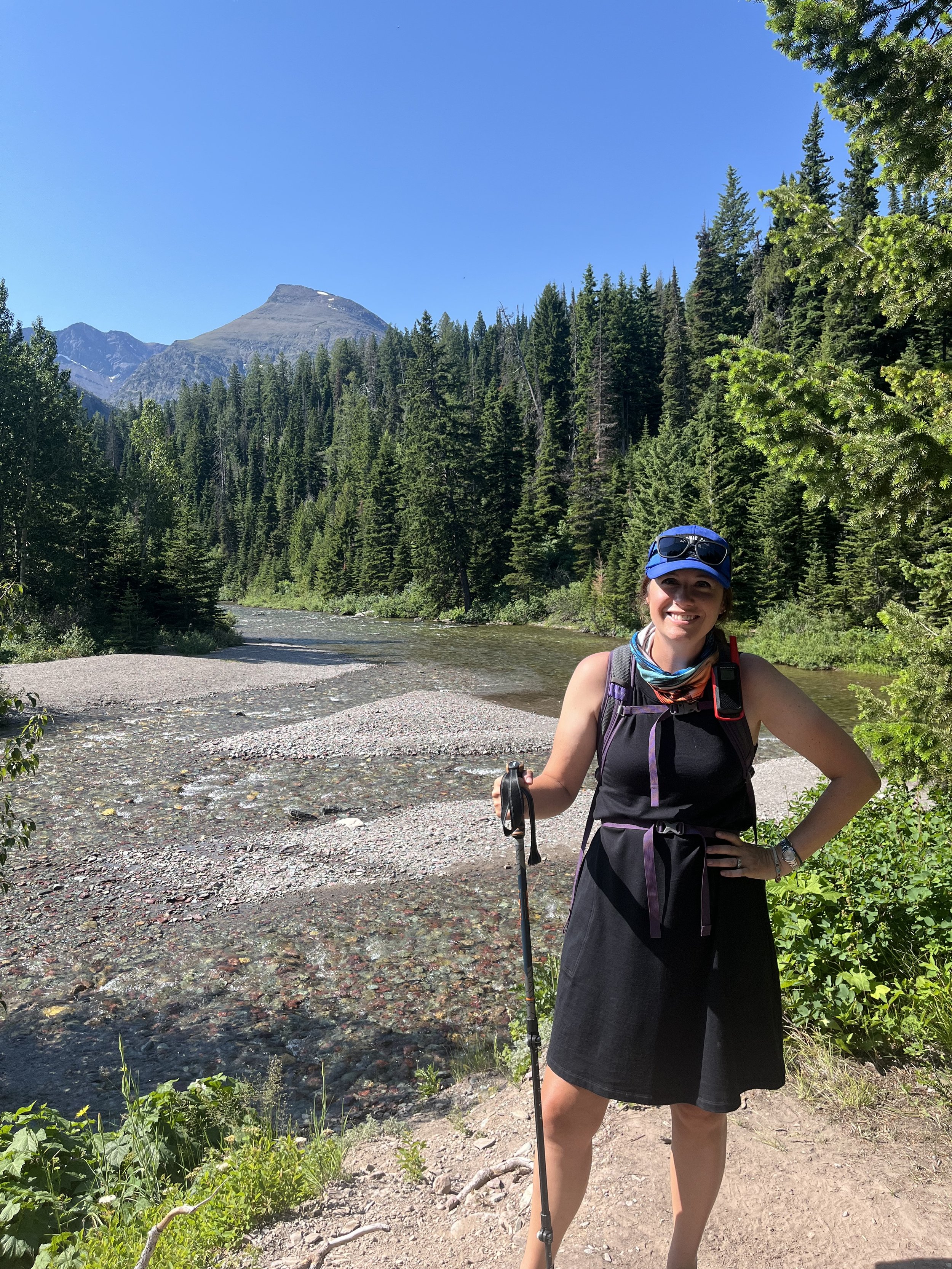2 Day Congaree National Park Itinerary
Explore South Carolina’s only national park with this comprehensive Congaree National Park itinerary!
Located less than an hour from Columbia, South Carolina, and an hour and a half from Charleston, South Carolina, Congaree National Park is an easy day trip.
It’s also the park my family thinks of as “our” national park since we live nearby and are there frequently.
To get the most out of this fascinating park, you’ll need to plan at least 2 days there.
Below, you’ll find our family friendly suggestions on how to make the most out of your visit, the best things to do in Congaree National Park, and ways to extend your trip beyond this short stay.
Since the park is in a floodplain, you’ll find boardwalks in several areas of the park rather than a traditional hiking path.
This post contains affiliates. If you purchase through the links below, I will receive a commission at no charge to you.
Visiting Congaree National Park: An Overview:
Why is Congaree a national park?
While Congaree doesn’t have some of the awe-inspiring vistas like Grand Teton National Park in Wyoming or Canyonlands National Park in Utah, it does protect an incredibly important ecosystem.
The national park here is one of the last remaining stands of hardwood forest in the Southeast, an ecosystem that once stretched over hundreds of miles but was all but destroyed due to logging decades ago.
When you come to Congaree, you’re walking in forest that has been untouched by humans. Because of this protection, the park is also home to some of the largest trees on the East Coast, and several of the champion trees are well over 150 feet tall.
When was Congaree National Park founded?
Beginning in the 1940s and 50s, several local environmentalists and outdoorsmen came together to find a way to protect this area. Their efforts paid off in 1976 when Congaree was designated a national monument.
Then, in 2003, it was upgraded to a national park and several areas of surrounding forest have been added to the original protected parcel. The park now stretched across 27,000 acres and will preserve this unique Southern ecosystem for decades to come.
This protection is very important as South Carolina, including nearby Columbia, is experiencing a population boom, and, without this NPS designation, this area would likely be developed in the near future.
Where is this national park?
Congaree National Park is located between Columbia and Orangeburg, South Carolina, near the middle of the state.
The entrance is approximately 30 minutes southeast of Columbia, and an hour north of Orangeburg.
You can get to Congaree from 2 of the major interstates in South Carolina, I-26 or I-77. Both interstates have large signs marking the correct exits for the park.
Congaree National Park Itinerary Day 1
NOTE: If this is your first trip to a national park, you’ll want to read through my comprehensive guide to the U.S. National Parks for beginners, which explains in detail everything from how the Junior Rangers program works to how to the best free things to do in the parks.
Congaree National Park is worth a visit for anyone heading through South Carolina!
Make plans to arrive early on day 1 as you’ll have an action packed day ahead of you.
Congaree National Park exit sign from I-26 | source
As mentioned above, the park is located between 2 of South Carolina’s major cities, Columbia and Charleston, and most visitors approach the park from one of these cities on I-26.
The park is well sign posted from both I-26 and I-77.
Keep in mind, however, that the park is a good ways off from either interstate, so you’ve still got about 30-45 minutes to go once you’ve taken that exit.
Morning Itinerary, Day 1
Once you’re on the property, first stop for a photo with the national park sign on National Park Road as you turn off Old Bluff Road in Hopkins, South Carolina.
Congaree National Park is one of the least visited U.S. National Parks, so you’ll likely have no traffic near you while you grab your photo.
Unlike other national parks we’ve visited, Congaree National Park doesn’t have an obvious place to pull over for your entrance photo.
The 2 lane road by the park’s entrance usually isn’t busy, so you can park on the shoulder there, or pull over on the entrance road itself.
One of our Camping Kiddos at the Congaree National Park sign
Next, make your way towards the Harry Hampton Visitors Center at the end of National Park Road.
PIN ME!
Here, you can chat with a ranger, buy snacks, or browse through the interpretive displays.
Linger for a bit to learn about the wildlife that calls this park home, and the unique features that separate Congaree National Park from other South Carolina spaces.
My kids love the visitors center here as there’s a huge (fake) cypress tree that they can crawl into, and an interactive fallen log where kids can learn about the animals that live in the trees throughout their life cycles.
You’ll also find a cute little reading/coloring table if your kids want to get started on their Junior Ranger booklets or read about the local plants and animals.
FUN FACT: Congaree National Park is home to the largest stand of old growth hardwood trees in the nation!
While you’re in the visitors center, grab a free junior ranger booklet from the ranger on duty.
Completing this packet will allow you to earn a junior ranger badge, but it’s also a great way to learn more about the park. Congaree National Park’s junior ranger program is challenging but still manageable enough to complete in a single visit, unlike some of the more robust ones you’ll find when visiting Yellowstone National Park or Glacier National Park with kids.
Explore more of Columbia, SC, and beyond!
Afternoon Itinerary, Day 1
Have lunch at one of the picnic tables around the Harry Hampton Visitors Center.
There aren’t any on-site restaurants, snack bars, or vending machines in the park, so you’ll need to bring everything you need with you for your visit. There is a water bottle refill machine near the bathrooms at the visitors center, but that’s all you’ll find for drink options.
Even if you were to venture outside of Congaree National Park, there aren’t any nearby restaurants as the tiny communities of Hopkins, Wateree, and Eastover are sleepy little places with barely a gas station between them. You’d have to go all of the way into Columbia (27 minutes) or Orangeburg (56 minutes) to get a substantial meal, so a picnic truly is your best option.
There are several covered picnic tables outside of the visitors center next to the parking lot that are kept clean. Each table can fit 6-8 people.
The next point on your itinerary is to head out into the park!
You’ll want to start on the Boardwalk Loop Trail, which is one of the best things to do in Congaree National Park.
Before you set out on any hike, it’s a good idea to check for any recent updates, trail conditions, and level of difficulty at AllTrails! Purchase your annual subscription here.
The beginning of the trail can be found behind the visitors center.
This easy trail is just over 2.5 miles and is mostly on a raised wooden boardwalk.
For a more educational experience as you walk this loop, print out the self-guided boardwalk trail pamphlet.
There are usually printed copies of this pamphlet in the covered walkway near the visitors center, but if that kiosk is empty, you can also ask for a free copy in the visitors center.
The loop will take anywhere from 1-2 hours depending on how quickly you walk through the cypress swamp.
I’d suggest taking it slow to see if you can spot a water moccasin snake, a turkey, or a white tail deer!
If you’re visiting Congaree National Park with little ones, you’ll want to read over my best tips for hiking with a toddler here.
Longleaf Campground vs. Bluff Campground in Congaree National Park
Hiking in to the Bluff Campground near the Longleaf Campground trailhead
Once you return to the visitors center after your Boardwalk Trail hike, head to your on-site campground to begin setting up your tent.
Congaree is a tent-only camping situation, so you’ll need to bring all of your camping gear.
In both the Longleaf Campground and Bluff Campground, all of the sites are walk-in.
However, the sites in Longleaf Campground are much closer to the parking area than those in Bluff Campground.
And by “much closer,” I mean that the Longleaf Campground is literally feet away from the parking lot.
Longleaf Campground also has a vault toilet at the entrance to the camping area. While vault toilets are barely better than a porta-potty, the ones here are consistently clean and accessible.
For this reason, I suggest Longleaf Campground if you’re camping with kids.
Recommended tent for Longleaf Campground: Core 9 Person Instant Tent
This tent is SUPER easy to put up and is massive for a tent.
We can easily fit both dogs, 4 cots, luggage, and toiletries in here with room left over to get dressed and move around.
It’s not the lightest (30 pounds), so you wouldn’t want to carry to too far, but it’s perfect for car camping.
We also still carry it along when we’re RV camping, too, as it’s a great extra outdoor space!
If you opt for Bluff Campground, it’s about a mile hike from the camping parking lot on the Bluff Trail.
Bluff Trail is wide and flat, and overall, a really easy introduction to a hike-in camping experience.
There aren’t any toilets but the woods in Bluff Trail, but each spot does have a fire ring and picnic table.
Recommended tent for Bluff Campground: Clostnature Lightweight Backpacking Tent, 2 person
This inexpensive tent (around $100) is a perfect way to get your kids out in nature without breaking the bank.
We have this tent and an REI 2-person tent that costs twice as much, and there’s honestly not much difference between the two.
While the REI 2-person tent weighs in just over 4 pounds, the Clostnature is still lightweight enough at 5.7 pounds for an easy, overnight hike like on the Bluff Trail.
When my family is hike-in tent camping, we carry 2 of these, one for each adult and kid pair.
The Clostnature tent is small—like every other 2 person tent I’ve ever experienced—but it does have a slightly larger footprint than most. You can tuck you and your kid’s backpacks and gear in that extra space which is nice.
Spend the late afternoon and evening at the campground, listening to the sounds of the forest and seeing if you can spot an elusive firefly.
Congaree National Park Itinerary Day 2
Hopefully, you’ve had a great night’s sleep and are ready to explore more of the park!
Morning Itinerary, Day 2
National Park Road leading to the Harry Hampton Visitors Center
After breakfast, you should prepare to see the park from a new perspective, and one that you barely touched on yesterday: from the water.
If you’re not staying a 2nd night, you’ll want to pack up your campsite as well since checkout time in at 11 AM.
NOTE: I do recommend a second night in the campground if your schedule allows as your entire day will be less rushed.
In any case, you’ll need to head to the Cedar Creek Canoe Launch for your morning kayak tour of the national park.
This tour by Carolina Outdoor Adventures leaves around 9:30 AM, making it a great mid-morning activity.
Your tour should last around 3 hours, and your guide will help you dive more deeply into the unique ecosystem here as well as all of the animals who depend on this floodplain. You might see deer, raccoons, snakes, lizards, or a wide variety of birds along the way.
Kayaking tour at Congaree National Park | source
Afternoon Itinerary, Day 2
After you’ve returned from your paddle, it’s time to head back to the visitors center or your campground for lunch.
Once you’re fueled, it’s time for another short hike, this time on the easy Bluff Trail.
One of the Camping Kiddos receiving her Junior Ranger badge at Congaree National Park
The Bluff Trail starts near the Visitors Center, and heads through stands of loblolly pines.
The out-and-back trail is just under 2 miles and generally flat.
You’ll have finished your Junior Ranger packet by this point, so return it to the visitors center at the end of the Bluff Trail to get sworn in and receive your badge!
Don’t forget to grab a souvenir before you leave.
If you’re staying another night at the campground, head back to your campsite for some much needed rest and relaxation.
Otherwise, head onto your next adventure elsewhere, like perhaps to visit another of our favorite parks in the south: plan the perfect trip to Shenandoah National Park with kids!
If you’re headed south to Charleston, check out the best hikes near Charleston in between your historic sites and delicious meals.
If you’re headed north, there are some great hikes in Greenville SC, and some incredible waterfalls in Walhalla SC!
What to Know before Visiting Congaree National Park
The campgrounds are on a reservation system.
While they aren’t usually filled up, it’s important to plan head to get the site you want.
You can book through Recreation.gov.
Prepping lunch at our campsite at the Bluff Campground
The campgrounds don’t have running water, but there is a vault toilet at one (Longleaf Campground).
In general, you’ll want to be as self-sufficient as possible while camping at Congaree National Park.
During heavy rainfall, parts of the park become inaccessible.
For this reason, I’d avoid visiting during the summer, when it’s common to have daily afternoon storms.
That being said, the Congaree River can flood its banks at any time during the year. While the park’s higher areas can be visited no matter what the flood plan is doing, you’ll miss out on many of the park’s most beautiful areas if you’re here during a time of flood.
The best times of the year to visit are in the winter, spring and fall.
The weather is mild and the bugs aren’t too bad between October and March, and this is when we visit Congaree the most.
South Carolina summers are very, very warm and humid, so be prepared if you’re visiting between late April and September. This is an active swamp area, so you’ll find plenty of bugs during this time of the year, too!
Get more suggestions on when to visit as well as pros and cons of each season in my guide to the best time to visit Congaree National Park.
Take advantage of one of the free ranger walks and talks at Congaree National Park.
These are offered throughout the week at different times of the day and night and cover a large range of topics from owl habitats to outdoor yoga.
The Camping Kiddos with the masks they made at the Congaree firefly display
You can check on the Congaree National Park website for upcoming programs or ask at the ranger desk inside the visitors center when you arrive. There’s often a sandwich board outside of the visitors center announcing daily program times and locations, too.
Try for the firefly lottery if you’re visiting in late May or early June.
This incredible event lights up the Firefly Trail and is something you won’t ever forget!
For just a few days in the late spring, the park’s nights light up with thousands of fireflies who blink in sync with one another. It’s truly unlike anything I’ve seen before.
Check the NPS.gov site to see upcoming dates for the lottery submission, and then read our complete guide to the synchronous firefly display at Congaree National Park here.
I’ve included information on everything from how to maximize your chance of getting reservations to what to wear to what to do while you’re visiting that night.
Explore more of South Carolina!














